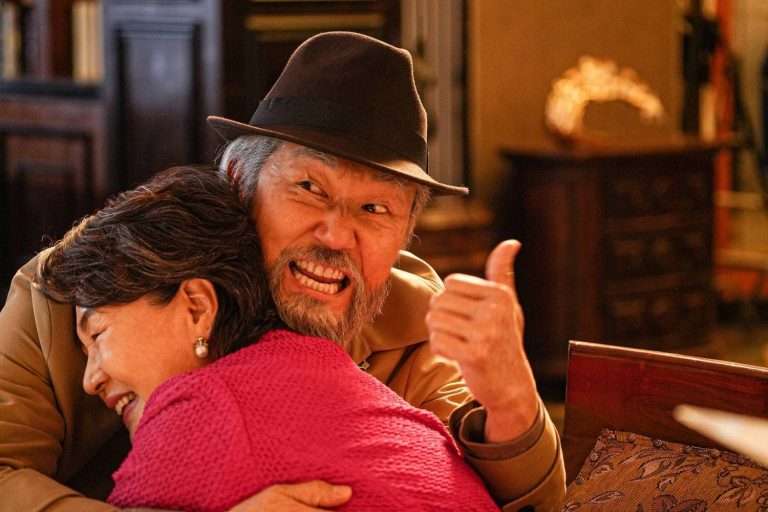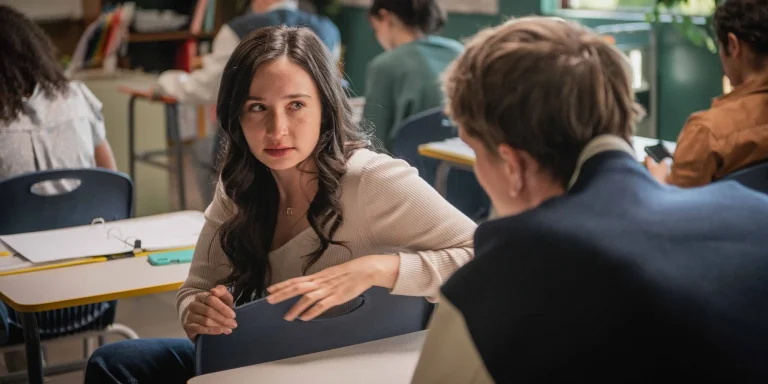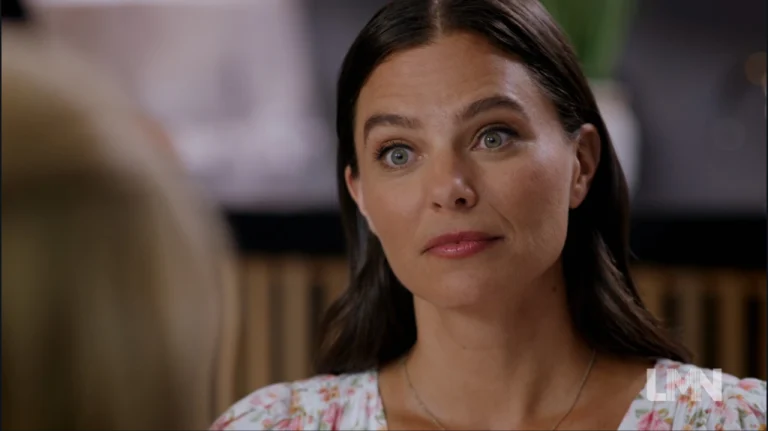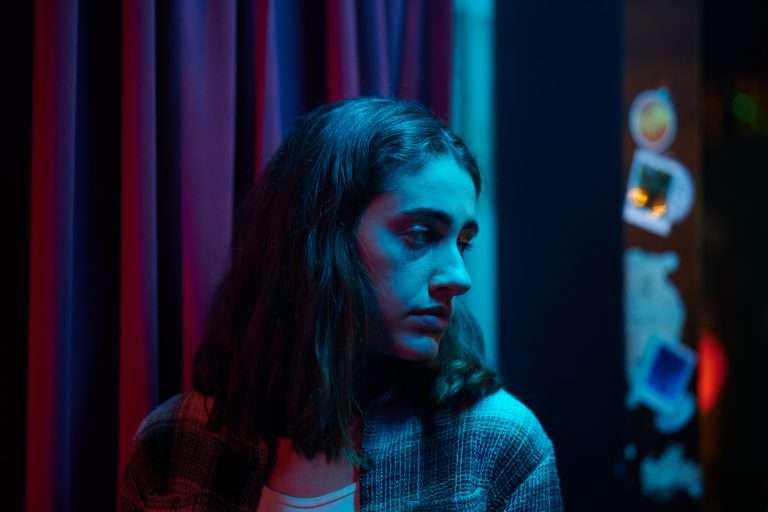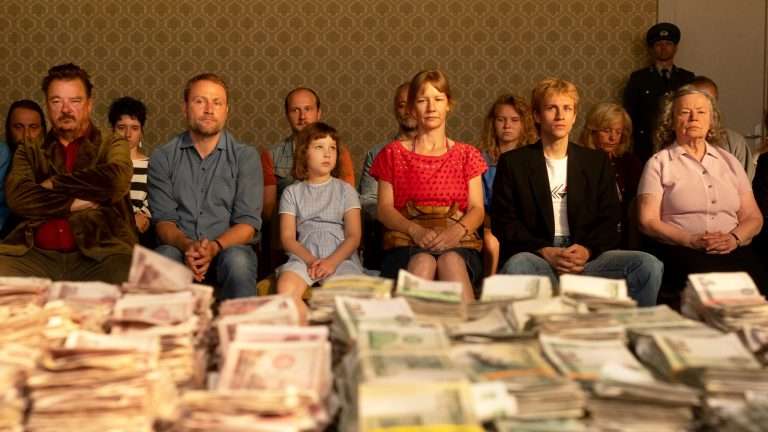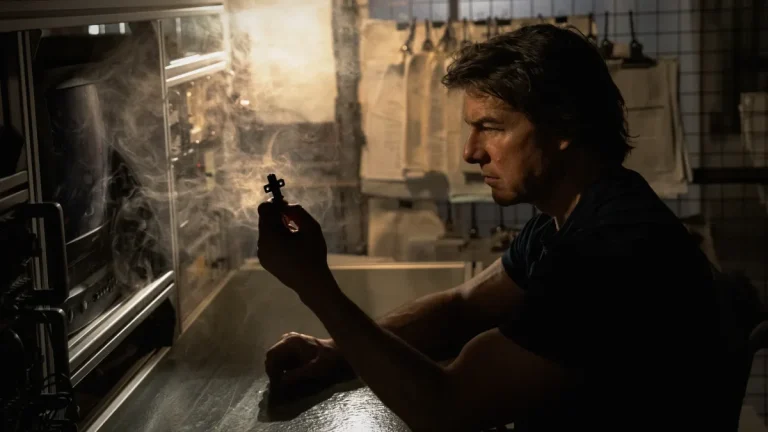It has often been said—or, more accurately, romanticized—that the greatest art is born from sheer heartbreak. The death of a partner might offer a similar kind of cinematic catharsis for someone who approaches filmmaking as an impulse of survival—an auteur. But few would dare to channel that grief quite like David Cronenberg, who processes the 2017 memory of his late wife’s passing in a way that radically reimagines what a deeply personal film—even one bordering on the autobiographical—can be.
“The Shrouds” is a diary of oddities, where the fixation on death and dead bodies is less absurd than the geopolitical treatment it’s immediately buried under. Identities unmask, truths arrive wrapped in volatile tech packaging, and the wife herself mutates into fragmented echoes of solitary existence. Yet Karsh—the stand-in for the master of new flesh, played with a sharp jawline and weary elegance by Vincent Cassel—wears not even a hint of horror.
And yet, it’s Diane Kruger’s fantastic turn as Becca/Terry/Hunny that slices through the film with the kind of unwarranted ache it seems to crave. Her erotic-goddess autopilot is at once mechanical and deeply reflective, teetering on the edge of substance in a way that forces submission—even to an AI avatar. That avatar is arguably the film’s closest resemblance to our lived reality, and yet feels devilishly seductive in that sleek, state-of-the-art manner only Kruger could pull off.
This friction between absurdity and allure is what allows her to extract the pulp from Cronenberg’s luminously flashy writing—which is, at points, hilariously unhinged: conspiracies as aphrodisiacs, insults from a virtual assistant delivered in the form of a koala or an amputated, masturbating dead wife, and gratitude expressed through a lavish final dinner—one that will likely kill a man, but he’s going to die anyway.
And still, “The Shrouds” holds a pulse tender enough to qualify as the human condition drama it quietly longs to be. Beneath all the jargon and business-model voyeurism lies a simple truth: this is about a man searching for closure without letting go of the memory of his beloved. What it mutates into is less a techno-thriller than a late-life coming-of-age—its dart thrown so precisely it leaves a mark. What follows is an attempt to break that down.
The Shrouds (2025) Movie Plot Summary and Synopsis:
The film opens with Karsh envisioning the naked, decaying body of his deceased wife, Rebecca, from within her grave—his perspective tunneled through a muddy cavity in the wall. He is pulled out of this vision by his dentist, who offers to give him Rebecca’s dental X-rays from her last appointment, hoping it might offer him some semblance of comfort. During a blind date with a similarly middle-aged woman at a restaurant he’s built inside a cemetery, we learn this fixation is only one part of a larger obsession: Karsh is a businessman who, four years after his wife’s death, has invented “GraveTech”—a tombstone that streams a live, interactive 3D image of a corpse’s gradual decomposition.
The image is generated through a modified shroud, and Karsh plans to be buried with Becca when his time comes. The cemetery-restaurant, decorated with dark shroud-inspired designs, is his attempt to divert attention from the tech-laden graves. Unsurprisingly, the date fails—Karsh’s inability to move on is intimidating for most women. Instead, he finds solace in Terry, Rebecca’s identical twin, who now works grooming dogs and remains convinced that doctors had treated her sister like a lab rat for experimental procedures. Their conversation is cut short when Karsh receives a message from work.
What happened to GraveTech?
Several tombstones in the GraveTech cemetery—including Becca’s—have been vandalized, and the entire network has been hacked, leaving the shrouds non-functional. Enter Maury, Terry’s ex-husband and the original coder of GraveTech’s security system, who also created Karsh’s virtual assistant, Hunny, designed in Becca’s likeness. Maury arrives at Karsh’s voyeuristic apartment to assess the breach and is visibly disturbed by the slideshow of Rebecca’s decaying body that Karsh keeps where most people would place family portraits. That night, Karsh dreams of Becca returning to him from the man who treated her—her ex-lover, Dr. Jerry Eckler—each time increasingly mutilated, missing parts of her body.
What does Karsh learn about Rebecca’s treatment?
While working late, Maury traces the hack’s origin to Iceland, one of the countries where Karsh intends to expand. He also notices strange bone protrusions in Rebecca’s corpse—features Karsh attributes to her cancer. Karsh later consults Dr. Zhao, one of the medics who treated Rebecca, and Zhao seems to confirm his theory. But full medical reports are missing, and according to Hunny, Eckler—her oncologist—disappeared after a trip to Iceland. One evening, Karsh finds himself watching documentaries on Conly, a Hungarian CEO turned Canadian expat.
Soon after, he’s approached by Conly’s blind wife, Soo-Min, who is terminally ill and wishes to sponsor a GraveTech tombstone in Budapest, though she’s wary of the political and religious entanglements that may have led to the sabotage. That night, Karsh tries wearing the prototype shroud to experience its effects firsthand, but Hunny intervenes. He visits Soo-Min again, this time under the pretext of research, and the two begin sleeping together. But the dreams persist—flashbacks of Becca returning without her left breast, her left arm, her buttocks—each time less intact. In one such dream, she tells him Jerry has preserved the amputated parts for exclusive medical research.
Where did the hack truly originate?
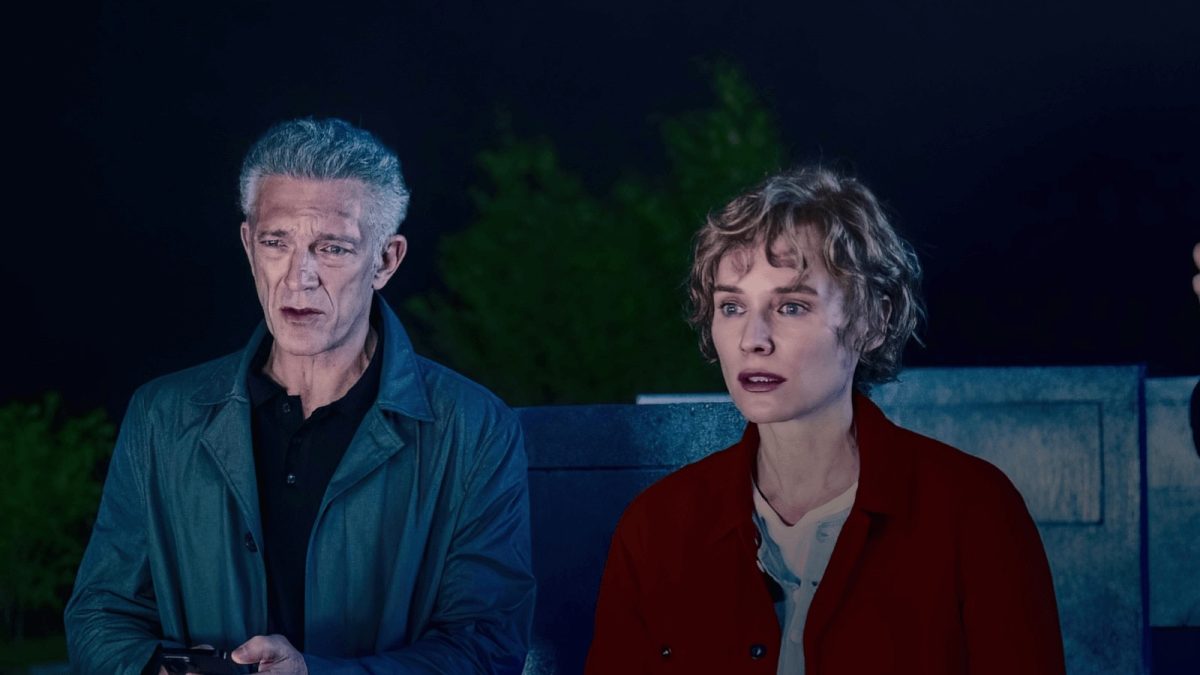
Karsh reaches out to an Icelandic government-backed activist, inquiring whether he was responsible for vandalizing the nine graves. Though the man opposes GraveTech, he denies any involvement. Meanwhile, Karsh’s bond with Terry grows increasingly sexual—Terry becomes aroused when Karsh recounts his experiences with Soo-Min and his deepening obsession with the mystery around GraveTech. As it turns out, the hack didn’t originate from Iceland.
Maury discovers that the vandalized tombstones had their data lines physically tapped. Soo-Min alerts Karsh to potential issues in Hunny’s source code. Soon after, Hunny transforms—animated as a mutilated, masturbating Rebecca—taunting Karsh over his sexual inadequacies compared to Eckler. Terry shares a covert video of Maury having a breakdown, triggered by jealousy over her relationship with Karsh. In it, Maury claims to control Hunny entirely and alludes to his role in the GraveTech breach.
The Shrouds (2025) Movie Ending Explained:
What does Dr. Zhao tell Karsh?
As the GraveTech network is restored and the tombstones repaired, Dr. Zhao informs Karsh that the strange growths on Rebecca’s body are artificial. Karsh later meets Maury in the woods, where Maury reveals his mutilated hand—two fingers missing—and confesses to hiring Russian hackers to hijack the network. He says that CCP-aligned GraveTech investors believed him to be their mole and tortured him for intel. He also claims that Dr. Zhao isn’t a real radiologist but an agent of Chinese surveillance working undercover in the West. Terry later tells Karsh that Maury lost those fingers in high school and has always hidden them.
What does Karsh find next to Becca’s grave?
Then comes the final blow: Karsh finds Eckler’s murdered body buried in the plot next to Becca. Terry theorizes about how he got there, and when Karsh casually suggests that he might have hired a hitman to kill and bury Eckler, she becomes sexually aroused. With Becca now having “company” in death, Karsh gives up his burial spot and jets off to Budapest with Soo-Min. As they kiss onboard, she suddenly appears to him with the same amputations as Becca and, speaking in Rebecca’s voice, offers to be buried with him in Hungary. Karsh accepts. They begin to have sex.
Also Read: 10 Best Performances of Vincent Cassel, Ranked
The Shrouds (2025) Movie Themes Analyzed:
Grief as Possession Technology
For an auteur as seasoned and rooted in genre reflexes as David Cronenberg, every emotion trickles through the veins of genre itself—it metabolizes into its own kind of mechanism. “The Shrouds” stands out as a twisted meditation on grief, not because it feels new, but because it feels engineered. If grief is proportionate to an artist through their art, what does it become for a businessman? A business model. That’s a simplification, of course—and probably not how grief functions in the real world—but within the logic of Cronenberg’s cinematic corpus, it’s entirely acceptable. And you quickly see why: Karsh, the protagonist, creates GraveTech—a system that quite literally converts mourning into a subscription-based surveillance interface.
The film doesn’t shy away from this perversion. Characters openly describe Karsh’s techno-voyeurism as a monetized ritual. His apartment is its own monument to corporeal obsession: masks displayed in glass-lit panels, dreary yellow hues draped across every surface, and a floor-level fish tank that isn’t ornamental, it’s a literal watery recess where, in one sensual moment, Terry trails her fingers across the swimming bodies like she’s reaching into the underworld.
This detour aside, the core questions the film confronts remain urgent: Can grief still be ethical if it’s commodified? Or is that just the natural trajectory of a world where everything gets packaged? The answer, in Cronenberg’s world, is yes—and yes.
Politics of Death

At its core, “The Shrouds” is a genre-smeared, glitching echo of the global thriller. But it’s not espionage in the classic, jet-setting sense. Its stakes are high, not because the world demands it, but because the characters are only just realizing how deeply geopolitics has trespassed into their grief. Death here isn’t personal anymore—it’s networked.
Think of the darkly comic funeral in Lijo Jose Pellissery’s “Ee. Ma. Yau,” where all hell breaks loose precisely because everyone takes the corpse too personally. “The Shrouds” flips that dynamic: here, the dead are too public, overcoded by nation-state paranoia and corporate espionage. There’s talk of Chinese surveillance, Russian hacker routes, Icelandic data breaches—but none of it feels jarring. That’s because Cronenberg integrates it through the hysteria of nine vandalized graves, making the absurdity coherent.
The film’s political plausibility is razor-edged. The CCP’s alleged investment in a Canadian graveyard project is absurd on paper, but rendered here as eerie, plausible, and quietly horrifying. In an age where global surveillance is no longer fiction and war feels just one push away, “The Shrouds” crafts death as the ultimate soft border, already infiltrated.
Masculine Illusion of Control
The film’s most incisive move might just be its decision to center its narrative around men, because that’s precisely how it ends up being all about the women. Karsh seems like the classic Cronenbergian protagonist: reserved, clean-cut, a high-functioning necro-voyeurist. At first, the story appears to frame itself as a study of him, then of Maury, the unstable ex-brother-in-law clawing at Karsh’s illusion of control. Then comes Dr. Jerry Eckler, Rebecca’s ex and her treating physician, whose corpse only appears at the end but whose absence has haunted the film all along.
But really, it’s a character autopsy of them all. Each of these men tries to control something—technology, grief, women—and each of them collapses in the face of that desire. Karsh believes he’s curated his grief, customized it like a home security system. But in truth, he’s being haunted by every echo of Rebecca.
Cronenberg’s vision of male power remains grotesque, impotent, and already decaying. His signature body-horror isn’t just about mutation—it’s about exposure. The real force field of this narrative is built from posthumous women: Hunny, the AI Becca-ghost rendered volatile and sexually charged; Terry, her living mirror and yet not her; Soo-Min, who physically transforms into Rebecca’s echo by the film’s climax. All roads circle back to the same body—fractured, desired, mutilated, preserved. In the end, Karsh is just another man undone by his fantasy of control. The women, even in death or mimicry, are the only ones with agency left.


